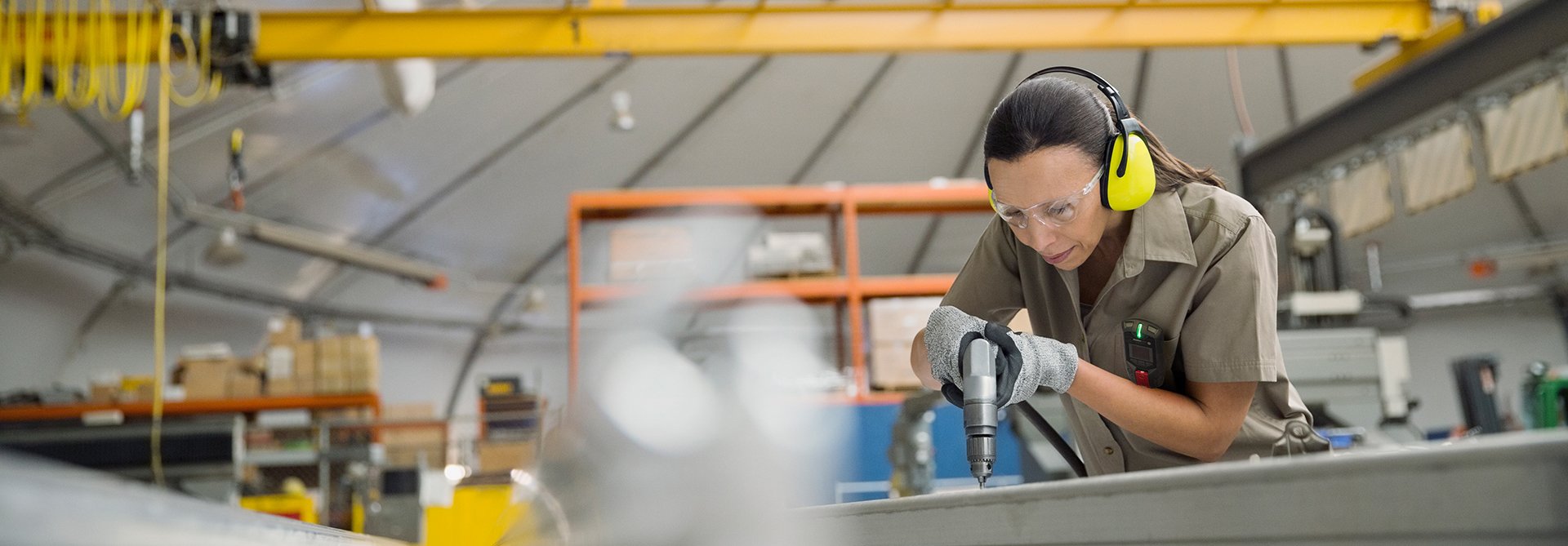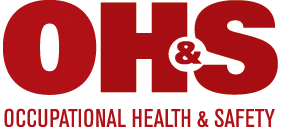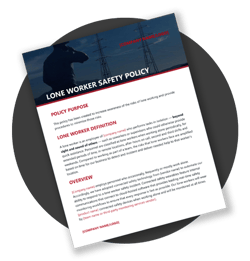Randall Arms is a seasoned safety professional with a 15-year career dedicated to process safety and worker empowerment. He has a rich history of managing safety processes to facilitate the implementation of best-in-class safety initiatives within companies for their lone worker programs. His comprehensive approach ensures both employee well-being and operational excellence across diverse workplace environments. From his roots in the fire service, Randall evolved through distribution and ground-level Environmental, Health, and Safety (EHS) roles in manufacturing. Notably, he held positions at Mohawk Industries, Bridgestone, and Gibson Brands, culminating in his role as Global EHS Manager. Randall joined Blackline Safety in 2021 and is now the Channel Operations Manager for North America. His dedication to people and safety initiatives ensures every worker safely leaves the workplace.
Are You Protecting Your Lone Workers Enough?
Randall Arms, Channel Operations Manager
December 06, 2023
What you need to know – from regulations to real-time visibility
 As the number of lone workers continues to rise—with an estimated 15-20% of today’s employees reportedly working by themselves—so too do concerns about their safety.
As the number of lone workers continues to rise—with an estimated 15-20% of today’s employees reportedly working by themselves—so too do concerns about their safety.
To keep these vulnerable workers safe, it’s vital to have a full picture of all the circumstances in which people work alone and what hazards they face. A comprehensive lone working policy that defines roles, responsibilities, training and resources—alongside knowing the legislation in your jurisdiction—is equally vital.
This article outlines strategies for building a robust lone worker safety program. The ultimate goal is to ensure every worker has the confidence to get the job done and return home safely to their families at the end of the day.
| 15-20% of workforce are lone workers |
||
| 44% of those, felt unsafe while at work |
20% of those, struggled to get help after an incident |
|
LONE WORK IS A BROAD CATEGORY
Do you have a good handle on who your lone workers are?
The variety of circumstances that define lone work might surprise you. While occupations like long-haul truck drivers or after-hours security guards might come to mind, the reality is the definition of what constitutes working alone is much broader. It’s important that you have a complete view of all your solo workers. The National Safety Council (NSC), a leading health and safety organization in the United States, classifies lone workers into four main categories. Those who:
The National Safety Council (NSC), a leading health and safety organization in the United States, classifies lone workers into four main categories. Those who:
- Work separately from others at a fixed worksite—for example, factory workers, warehouse workers and machinery operators.
- Work alone away from the main worksite—for example, lone construction/trades workers, oil and gas field workers, and remote/hybrid workers.
- Work on the move/mobile workers—for example, transportation and logistics drivers, technicians on service-call outs, and sales reps.
- Work irregular hours/shift workers—for example, emergency responders, healthcare workers, and retail staff.
HAZARDS AND RISKS HIGHER THAN OTHER OCCUPATIONS
Lone workers are highly vulnerable workers. Since they operate predominantly out of sight and sound of their colleagues, they face increased likelihood and severity of incidents as a result of being unable to access immediate help.
|
“According a 2021 survey, nearly 70% of organizations reported a safety incident involving someone working by themselves in the past three years, and 1 in 5 incidents were described as ‘quite or very severe’.” – Katherine Mendoza, Senior Director, Workplace Programs, NSC |
Some of the most common risks to lone workers include: gas or chemical exposure; slips, trips and falls (read a real-life incident); electrocution; equipment accidents; motor vehicle accidents; sudden illness; remoteness; workplace violence and weather hazards (read a real-life incident).

|
NiSource redefines safe and reliable service for the utility industry |
LONE WORKER LEGISLATION EVOLVING, MORE STRINGENT
Work-alone legislation has been enacted in many regions. While a foundational component is the periodic confirmation of employee well-being—often through a manual check-in process—these protocols can be manually intensive and prone to human error. Employees forget to check in or out, causing false alarms. Supervisors get complacent and neglect to check in on someone who may need help. That’s why legislation is evolving and becoming more stringent globally (vi):
- United Kingdom leads the way—outlines formal parameters on the responsibilities of employers and lone worker equipment and monitoring equipment (vii), making it one of the most successful nations when it comes to workplace safety.
- Australia mandates monitoring—makes it compulsory for employers to monitor the health and well-being of any of their employees working remotely or in isolated conditions.
- Duty of Care defines US legislation (viii)—stipulates employers have a legal obligation to provide a workplace free from recognizable hazards that cause, or are likely to cause, death or serious physical harm to employees when there is a feasible method to abate the hazard.
- Canada—regulates working alone in three-quarters of provinces and territories with employer requirements to assess the health and safety hazards associated with each particular job.
- ISO 45001—outlines the world’s international standard for occupational health and safety for employees and visitors in the workplace. ISO 45001 has seen a 97.3% increase in worldwide certificates in 2020, a testament to its growing importance globally.
 |
DID YOU KNOW? |
CONNECTED TECH DELIVERS LAYERS OF SAFETY WHEN WORKING ALONE
Cloud-connected IIoT safety devices—like gas detection and lone worker wearables, and area gas monitors—are becoming standard as workplaces transform digitally. They can link employees with live monitoring, enable real-time information sharing, collect vital location data, support more informed decision-making, and facilitate faster emergency responses. Most importantly, workers can confidently get their jobs done knowing they are protected.
Advances in automation including data visualizations, compliance reporting and analytics also mean less time gathering information and more time acting on it to improve. Not only do these capabilities boost safety, but they can also streamline workflows, eliminate cumbersome manual reporting, support incident investigations, improve efficiency and deliver cost savings along the way.
Specific capabilities to look for that support your lone work safety checklist include:
| Location technology—integrates GPS to provide accurate positioning outdoors, alongside location beacons to provide more accurate positioning indoors where GPS signals may be weak or unavailable. | |
| Real-time visibility—harnesses built-in cellular-enabled cloud-connectivity for continuous communication and situational awareness, from anywhere. | |
| Satellite connectivity—offers additional coverage for a failsafe way to keep in touch, even in the most remote locations. | |
| Two-way voice—enables monitoring personnel to communicate with lone workers via speakerphone. |
|
A survey of 224 lone workers and supervisors noted that 93% of workers reported “sometimes” or “often” working outside of cell phone coverage, and 63% have been unable to contact someone due to a lack of connection. |
| Emergency SOS—allows employees to call for help manually and silently, without looking or potentially pressing the wrong button, to access support discreetly. | |
| Fall/no motion detection—senses if a worker slips, trips, fall or when a person is motionless, then triggers and alarm. | |
| Missed checked-in—sends an alert if a worker fails to check-in and confirm their wellbeing at the agreed upon interval. | |
| Gas detection—detects potentially toxic, asphyxiant and explosive gas leaks in the atmosphere. | |
| Compliance management—provides data-informed insights into how devices are used, calibrated and bump tested to understand and improve worker behavior. | |
| Automated analytics—delivers out-of-the-box or customizable analytics to help you understand gas exposure, improve efficiency, and manage compliance. |
 |
Lone Worker Solutions Save Lives |
5 ESSENTIAL ELEMENTS OF A LONE WORKER SAFETY POLICY
In addition to technology, a lone worker policy can be one of the most important ways to protect the health and safety of your employees, setting the playbook for employees who work by themselves with no close supervision.
While a lone worker policy will need to be customized to the needs of your organization and team, there are basic common elements to include.
- Statement of policy purpose: fosters engagement by outlining reasons for creating the policy, ways it will help keep lone workers safe and how it aligns organizational goals.
- Identification and assessment of lone worker risks: outlines the unique lone worker circumstances and roles in your organization. This comprehensive assessment should include factors such as who is at risk, hazard identification, level of risk, and precautionary measures for risk mitigation.
- Roles and responsibilities: specifies each person’s accountabilities including the policies and required (like how often to check-in, how to travel between locations, equipment required, communication channels) to keep themselves safe; and how and when managers must report an incident.
- Reporting procedures: clearly lists the steps to be taken to report an incident; if you have more than one channel for reporting, provide instructions for each.
- Employee training, resources and contact information: makes it easy for employees to get answers to their questions, obtain the instructions they need and share any concerns they may have about safety issues.
EARLY ENGAGEMENT, VISIBLE LEADERSHIP ESSENTIAL FOR PROGRAM SUCCESS
Once you’ve got a lone worker safety policy in place, it will invariably involve changing how things are done in the workplace. That makes the management of change a core component to set your lone worker program up for success. That’s even more so the case if it involves the introduction of technology–like the connected lone worker safety devices mentioned earlier.
Since new technology often involves asking individuals to do their jobs differently, or requires them to learn new skills, employees are greatly affected by these types of changes. It’s critical to educate workers on the rationale for change, involve them in the decision-making process including the development of the lone worker policy, and give them the opportunity to pilot new equipment and procedures.

|
“With connected lone worker safety devices, CEMEX has benefitted from having that peace of –both on the management side and for our night drivers. We’ve got this system in place now, allowing us that level of comfort when people are working alone on sites. If there is a situation, within seconds we can see exactly where they are.” |

LONE WORKER PROGRAM A MUST-HAVE TO GET IN FRONT OF RISK
Knowing who your lone workers are, assessing and mitigating the risks, and developing a comprehensive policy that clearly defines roles and accountabilities is critical to protect this growing and vulnerable segment of the workforce.
And it’s not just a nice-to-have, but a must-have as legislation in this area evolves and becomes more rigorous globally.
The good news is that by equipping your organization with advanced monitoring technology, the right training and resources and putting a comprehensive safety program in place, swift action to get ahead of risk and keep your lone workers safe is possible.
The bottom line? Lone worker safety is a team effort and requires the participation and contribution of not just the workers themselves, but managers, leaders and the rest of the organization in order to be effective.
 READY TO LEARN MORE?
READY TO LEARN MORE?
Join our upcoming webinar with Occupational Health & Safety, Building a Safer Workplace: Harnessing Connectivity to Boost Your Lone Worker Safety Program, to learn how you can protect your lone workers and meet safety compliance requirements effectively.
DATE: January 30, 2024
TIME: 11:00AM ET - 10:00AM CT - 8:00AM PT
- Pennington, Bill and Pritam Kapadia, Strategic Focus: Reducing Lone Worker Injury and Fatality Rates (Verdantix, 2021).
- EHS Today
- Using Lone Worker Monitoring Technology to Protect Workers (National Safety Council, 2023)
- https://www.nsc.org/newsroom/work-to-zero-new-research-prevent-lone-worker-inci
- https://safetylineloneworker.com/blog/lone-worker-incidents-in-the-workplace-it-is-more-common
- https://www.blacklinesafety.com/hubfs/website/documents/white-paper/safety-monitoring-white-paper-en-na.pdf
- https://www.blacklinesafety.com/blog/employee-safety-monitoring-in-the-uk-leadership
- https://safetylineloneworker.com/work-alone-regulations-international
- https://www.blacklinesafety.com/hubfs/website/documents/white-paper/safety-monitoring-white-paper-en-na.pdf
- https://www.canada.ca/en/employment-social-development/programs/laws-regulations/labour/interpretations-policies/059.html
- https://www.iso.org/the-iso-survey.html
- Using Lone Worker Monitoring Technology to Protect Workers (National Safety Council, 2023)
Get In Touch
Let’s start a discussion about your safety challenges and needs.
Related Blog Posts
Real-Life Incident: Mason’s Story — High H2S Exposure
November 25, 2025
“Shortness of breath. Request EMS to the location.” How Real-Time Gas Detection Led to a Quick Save Exposure to toxic gases can go from a strange...
Real-Life Incident: Gerry’s Story: Alone in the Boiler Room With CO
October 21, 2025
When a routine patrol became a potential gas poisoning tragedy, quick action and life-saving technology made all the difference. It was a routine...
Real-Life Incident: Brian’s Story - Containing a Texas Brush Fire
August 26, 2025
How quick action stopped a blaze from spreading, safeguarding nearby neighborhoods In a farming community in rural Texas with a population fewer...






